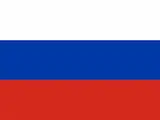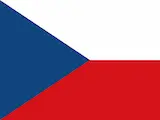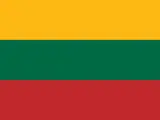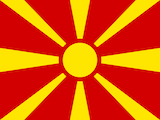How to start investing from scratch: a beginner's guide
Interested in innovative projects and want to profit from them, but hesitant to invest because you’ve never tried? Don’t worry—you’re not alone. Here, we’ll explain how to start investing safely.
Spoiler: it’s easier than you think.
Why you should start investing—and how it works
Investing is allocating your own funds with the aim of earning a future return. Put simply, you invest money today so it can “work” for you and generate income tomorrow. Unlike savings that just sit in an account and lose purchasing power to inflation, investments help preserve and grow your capital.
Even small amounts invested regularly and wisely can compound into a substantial sum over time thanks to the power of compound interest. Investing is especially relevant in a volatile economy: the right assets help protect savings and support financial independence.
How to start investing from scratch—a beginner’s guide
Many beginners mistakenly believe they need a lot of money to start. In fact, you can begin with as little as 1,000 rubles. The key is to grasp the basics and act methodically.
The first step is to define your financial goals: buying a home, funding children’s education, retirement, or passive income.
Then build an emergency fund—three to six months of expenses—so you don’t have to sell assets in a downturn.
Next, study basic financial instruments: stocks, bonds, ETFs, real estate, precious metals.
You don’t need to invest in everything at once—start with one or two areas that feel clear and safe to yo

Investing money properly = Properly assessing your finances
What are the ways to invest—and where to put your money
There are many ways to invest. Classic options include the stock market (through a broker), bank deposits, mutual funds (PIFs), and individual investment accounts (IIA). More aggressive strategies include cryptocurrencies, startups, and venture investments. There are also alternative assets: real estate, art, and gold.
For newcomers, it’s best to begin with conservative instruments: federal loan bonds (OFZ), corporate bonds of reliable companies, or dividend-paying blue chips. ETFs (exchange-traded funds) are an excellent way to diversify: they let you invest in hundreds of companies around the world at once.

An investor's choice in 2025
How to invest wisely in Russia
As a new investor in Russia, it’s essential to consider the specifics of the local market.
First, use regulated, reputable platforms—brokers licensed by the Bank of Russia.
Second, open an IIA: it gives you a tax deduction of up to 52,000 rubles per year.
Third, diversify your portfolio not only by asset class but also by currency—keep part of your savings in US dollars or euros to hedge against FX swings.
Also keep an eye on news and macro indicators: the Bank of Russia key rate, inflation, and sanctions—all of these affect investment returns. Don’t lose sight of the long term: while the Russian market can be volatile, stable assets (for example, OFZs or oil and gas stocks) tend to deliver resilient returns in the medium and long run.

There are many ways to invest: how to avoid risks?
Common mistakes and fears for beginners
One major mistake is trying to get rich quickly. Investing is a marathon, not a sprint. Another common pitfall is emotional decision-making: buying at the top and panic-selling at the bottom. To invest properly, cultivate financial literacy—analyze rather than react impulsively.
Many people are also afraid of losing money. That’s natural, but you can minimize risk: start small, diversify, and never invest your last savings. Effective investing isn’t about guessing the market—it’s about discipline, strategy, and patience.

The main mistake of a novice investor: fear
Step-by-step: how to start investing on your own
Here is a step-by-step plan for those who want to start from scratch:
Define your goal and time horizon. Do you want to save for a car in 3 years or fund retirement in 20? This drives your choice of instruments.
Build an emergency fund. Without it, any investment is risky.
Learn the basics. Take free courses and read books (for example, Benjamin Graham’s “The Intelligent Investor”).
Choose a broker. Look closely at fees, reliability, and a user-friendly platform.
Open an IIA. It gives you tax benefits and extra motivation.
Start with conservative assets. For example, a portfolio of 70% bonds and 30% stocks.
Contribute regularly. Even 1,000 rubles a month builds discipline and a habit.
Review your portfolio quarterly. Keep your risk–return balance on track.
Investing is not only about money—it’s also about personal growth, financial freedom, and confidence in the future.
Invest in the future today
If you’re looking for a promising and innovative project, take a look at New Generation Airships'—a technological solution for eco-friendly, quiet, and cost-efficient transport of cargo and passengers. This project combines advanced development, steady demand, and strong growth potential. By investing in New Generation Airships', you not only gain an opportunity to earn returns—you become part of the future of transportation.
The project takes care of its investors: welcome bonuses for newcomers, 24/7 support, installment plans, and the ability to increase your investment package at a discount. Learn more here.
Start investing today—your capital deserves to stay ahead!
Megosztás:
További olvasnivaló:
Loading news...
























